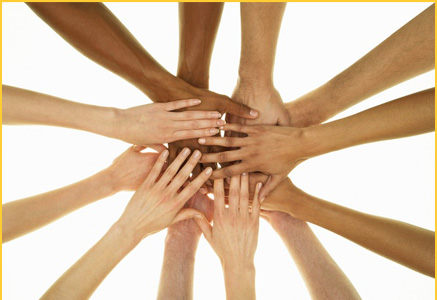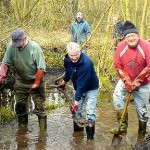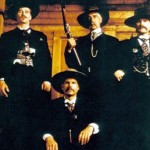Sharing is Living
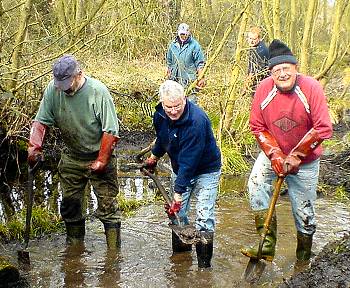 One of the most interesting campaigns launched in the last few months was the AARP’s October 2009 “Sharing is Living” campaign. The goal of the campaign was to inform Hispanics about activities, tools and new ways of making positive and autonomous contributions to their communities.
One of the most interesting campaigns launched in the last few months was the AARP’s October 2009 “Sharing is Living” campaign. The goal of the campaign was to inform Hispanics about activities, tools and new ways of making positive and autonomous contributions to their communities.
This campaign was unique in that it took into account particulars of Hispanic culture relative to concepts like community values and traditions and permits greater flexibility in schedules, activities and options.
Hispanics are an important segment of the population and present huge possibilities for growth in terms of social volunteer work. Public service through volunteer work is a long-lasting and celebrated American tradition. While in many countries, people prefer to use their free time going out for drinks, eating in restaurants, getting drunk or otherwise wasting their time in frivolous pursuits, in the United States many citizens dedicate their free time to volunteer work in their communities, a reality that stands in stark contrast to a common misperception of America and Americans in other countries, of a lack of social commitment among Americans.
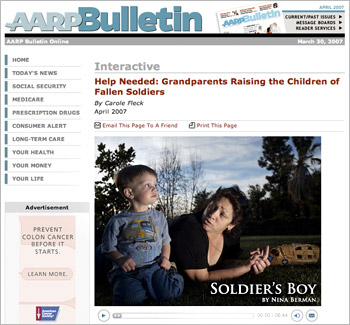
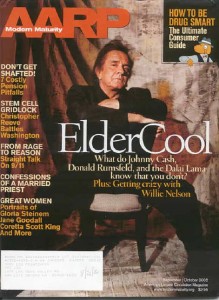
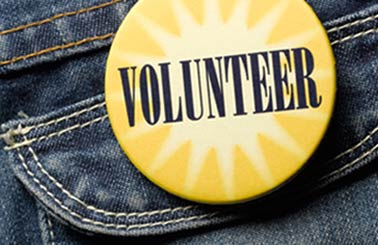

A study realized by AARP in 2008 indicated that there has been an increase in interest in volunteer work among Hispanics. Concretely, half of those surveyed, individuals between 44 and 77 years of age, said they would like to do volunteer work in the future. The study also reported that the percentage of volunteer activity among Hispanics was significantly lower than in other groups, with 48% of those surveyed confirming the completion of volunteer work for a charitable organization this year. Even so, 48% is a high percentage of participation for volunteer work when compared to other countries. Another report by Volunteering in America, concludes that Hispanic volunteers work an average of 46 hours a year, most often in fundraising, food distribution, teaching, orienting and transportation.
There are various factors that explain the barriers volunteerism among Hispanics, such as limited time, limited information about volunteer opportunities and economic restrictions. One of the positive factors that motivates volunteers is making a difference by doing something extraordinary and collaborating in the improvement of volunteers’ communities. Another motivator is helping others in a personal way by making use of one’s own abilities, instead of doing nothing or dedicating one’s time to senseless or hedonistic activities that have no real value, but consume energy and economic resources.
The goal of AARP is to help citizens over 50 and their families find a way to make social contributions and help their communities by giving them ideas about activities they can do independently, how they want and when they want. With these innovative and flexible concepts there’s no excuse for not becoming involved and helping the community through volunteer work.
Some of the ideas for volunteer service projects that AARP has prepared and offers to citizens are really useful without being very complicated. Some examples are projects on how to organize and initiate hiking groups for field trips and physical fitness, how to prepare for natural disasters like hurricanes or tornados, how to avoid frauds like identity theft, prepare for household emergencies, test safety in the home, as well as many other useful straightforward ideas.
One of the strengths of this particular campaign is that it emphasizes the possibility of doing truly positive things for others through simple volunteer projects like helping to paint a community center, cleaning up neighborhoods or teaching in schools in marginal neighborhoods
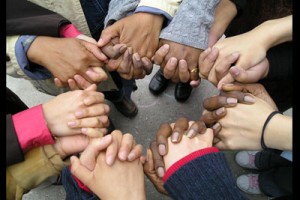
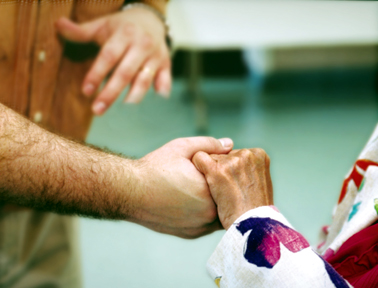

In its attempts to connect with the Hispanic population, a community that often benefits from these volunteer projects, the campaign acquires increased importance, in its commitment to Hispanics within their communities as well as the strengthening of social activities that are positive for everyone.
In addition to its social benefits, volunteer work, according to various studies, benefits the general health of individuals that perform it, lowering their likelihood of illness or depression and increasing their level of satisfaction with their lives, thus increasing possible years of life. These impressive health benefits are perceived by those who donate around 100 hours of volunteer work per year.
The AARP is a non-profit, non-partisan organization, made up of members who help 50+ individuals to maintain their independence, choices and control over their lives, in a way that is beneficial and economically viable for them and society. AARP doesn’t support or finance political candidates or campaigns in any way. AARP publishes The Magazine, the world’s most widely circulated magazine, with more than 35.5 million readers and is a trusted voice for Americans over 50; The AARP Bulletin, a source of news for 40 million AARP members and 50+ Americans; and AARP Second Youth, the only bilingual publication in the United States dedicated exclusively to the Hispanic Community over 50. The AARP Foundation is a charitable branch of the organization, whose programs provide security, protection and independence to older adults in need, through the support of thousands of volunteers, donors and sponsors.

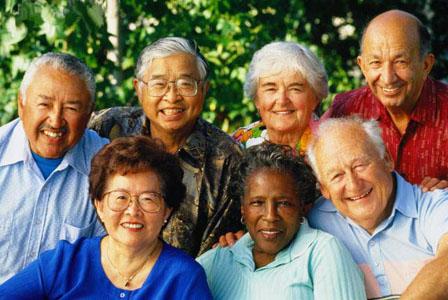
Most of the time, doing good is about finding the right opportunity to do it, and it’s often something that has to be actively searched out. In a world and a society that tend to focus on activities that are unimportant and bring nothing to the table, activities are too often centered around social life as opposed to social and community commitments; volunteer work is one of the best options to help our fellow men in a real and down to earth way.
When people say that they can’t make a difference and that things are what they are, when they drink, party, or shop for things they don’t need or really even want, instead of helping and participating in truly significant activities, it’s important to take into account that there are other options within our reach. The degree of commitment of a person to a cause and the value of that commitment is measured, above all, by his or her voluntary actions; these actions define that person better than anything he or she can say with words. Our actions and the things that we do, these are the things that speak the loudest and the truest of who we are and what are our real priorities.

